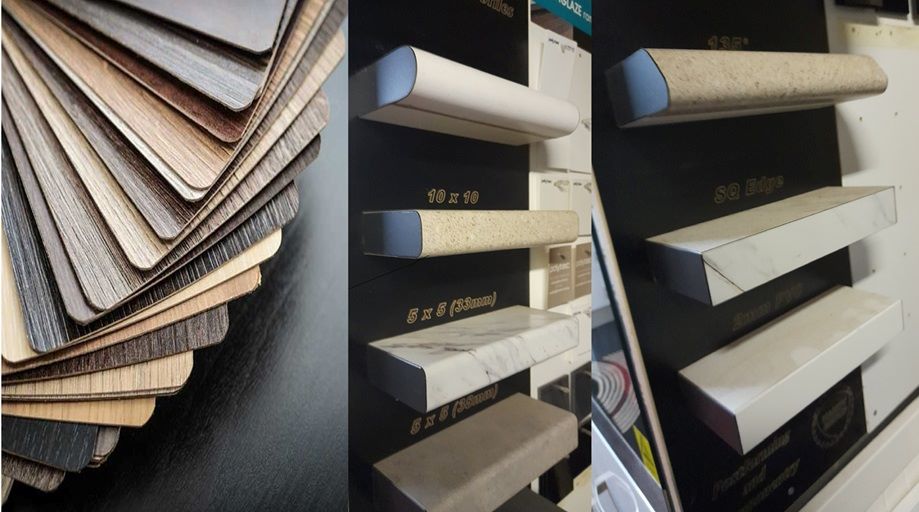Table of Contents
ToggleStone benchtops are a top choice for kitchens, bathrooms, and commercial spaces due to their durability, timeless appeal, and easy maintenance. Whether you’re a homeowner, renovator, architect, builder, or fabricator, understanding the installation process is crucial to ensuring a seamless and long-lasting benchtop.
This guide covers every step of how stone benchtops are installed, from preparation and templating to sealing and final adjustments. We’ll also explore the importance of professional installation and cost considerations.
For those in Melbourne looking for expert stone benchtop installation, visit Emporium Stone for high-quality craftsmanship and premium stone options.
1. Preparing for Stone Benchtop Installation
1.1. Site Preparation
Before installing a stone benchtop, the site must be prepared properly:
- Cabinetry Inspection: Ensure all cabinets are level and securely installed. Cabinets must be within 3mm of flat and level over a 3m span to prevent stress on the stone.
- Old Benchtop Removal: If replacing an existing benchtop, carefully remove it while ensuring plumbing and electrical components remain intact.
- Structural Support: Since stone is heavy, reinforcement may be required, especially for larger spans and overhangs.
1.2. Measurements & Templating
Precision is key to ensuring the stone benchtop fits perfectly. This is done through:
- Digital Templating: Uses laser measuring tools to capture exact dimensions, reducing errors.
- Manual Templating: For complex designs, a thin plywood template may be used to mark sink cutouts, edges, and overhangs.
- Allowance for Overhangs & Joins: Standard overhangs are 20-30mm, but waterfall edges or breakfast bars may require extended overhangs with support brackets.
2. Stone Fabrication & Cutting
Once the templating is done, the stone is cut, polished, and finished before installation.
2.1. Choosing the Right Stone & Thickness
The stone type affects durability, appearance, and installation complexity:
- Engineered Quartz (Caesarstone, Silestone): Easy to fabricate and install.
- Granite & Marble: Requires sealing and extra handling due to natural variations.
- Porcelain & Sintered Stone (Dekton, Neolith): Extremely durable but difficult to cut.
Standard slab thicknesses: 20mm or 30mm. A mitred edge can create the illusion of a thicker slab (40mm or 60mm appearance).
2.2. Precision Cutting & Edge Profiles
Using CNC machinery and waterjet cutting, the stone is shaped according to specifications:
- Sink & Cooktop Cutouts: Made with precision to fit undermount or top-mount sinks.
- Edge Profiling: Different edge styles impact aesthetics and price:
- Straight (Square Edge) – Standard & Cost-Effective
- Pencil Round – Minimalist & Modern
- Bullnose – Fully Rounded for Classic Designs
- Mitred – Seamless 40mm Look for a Luxurious Finish
- Waterfall Edge – Vertical Slab Extending to the Floor
2.3. Quality Control & Pre-Installation Inspection
Before transporting the stone, fabricators check:
Thickness Consistency
Surface Polishing & Finishing
Edge Smoothness
Matching Veins for Natural Stone
3. How Stone Benchtops Are Installed
Step 1: Transporting & Handling
Stone slabs can weigh 100-200kg, requiring proper lifting techniques and safety equipment to avoid breakage.
- Transport in an upright position to prevent flexing.
- Use protective padding to avoid scratches.
Step 2: Dry Fitting the Benchtop
Before securing the stone:
- The benchtop is placed on the cabinetry without adhesive to check alignment.
- Any necessary adjustments (e.g., minor trimming) are made on-site.
Step 3: Applying Adhesive & Fixing the Benchtop
- Industrial stone adhesive or silicone is applied along the cabinet tops.
- Clamping or weights are used to hold the stone in place while drying.
- Joints are sealed with color-matched epoxy or resin to create seamless connections.
Step 4: Installing Sinks & Cooktops
- Undermount Sinks: Silicone is applied to seal the gap between the sink and stone.
- Top-Mount Sinks: The sink is placed into the cutout and sealed with waterproof caulking.
- Cooktops: Cutouts must have heat-resistant reinforcement to prevent thermal shock cracking.
Step 5: Final Adjustments & Sealing
- Natural stones (Granite, Marble, Limestone) require sealing to prevent stains.
- Edges and joins are buffed & polished for a smooth finish.
4. Post-Installation Care & Maintenance
4.1. Curing & Initial Use
- Allow 24-48 hours for adhesives to cure before placing heavy objects on the benchtop.
- Avoid exposing the stone to extreme heat or moisture during the first 72 hours.
4.2. Cleaning & Long-Term Maintenance
- Daily Cleaning: Use a soft cloth and pH-neutral cleaner (avoid acidic products).
- Preventing Damage:
- Use trivets for hot pans.
- Avoid using abrasive scouring pads.
- Reseal natural stones every 6-12 months.
5. Common Installation Mistakes & How to Avoid Them
Mistake 1: Uneven Cabinets → Ensure base units are level before installation.
Mistake 2: Poor Joint Sealing → Use professional-grade adhesives & color-matched fillers.
Mistake 3: Incorrect Sink Cutouts → Double-check measurements before cutting.
Mistake 4: No Reinforcement for Overhangs → Use brackets for overhangs exceeding 300mm.
6. Why Professional Installation Matters
Hiring an experienced stone fabricator & installer ensures:
Precision cutting & seamless joins
Correct sealing to prevent stains & moisture damage
Structural integrity & longevity
For expert stone benchtop installation in Melbourne, trust Emporium Stone to deliver premium craftsmanship.
Final Thoughts
Installing a stone benchtop requires precision, expertise, and careful handling. Whether you’re a homeowner, builder, or designer, following a professional installation process ensures a flawless finish and long-term durability.
For high-quality stone benchtops & expert installation services, visit Emporium Stone.


